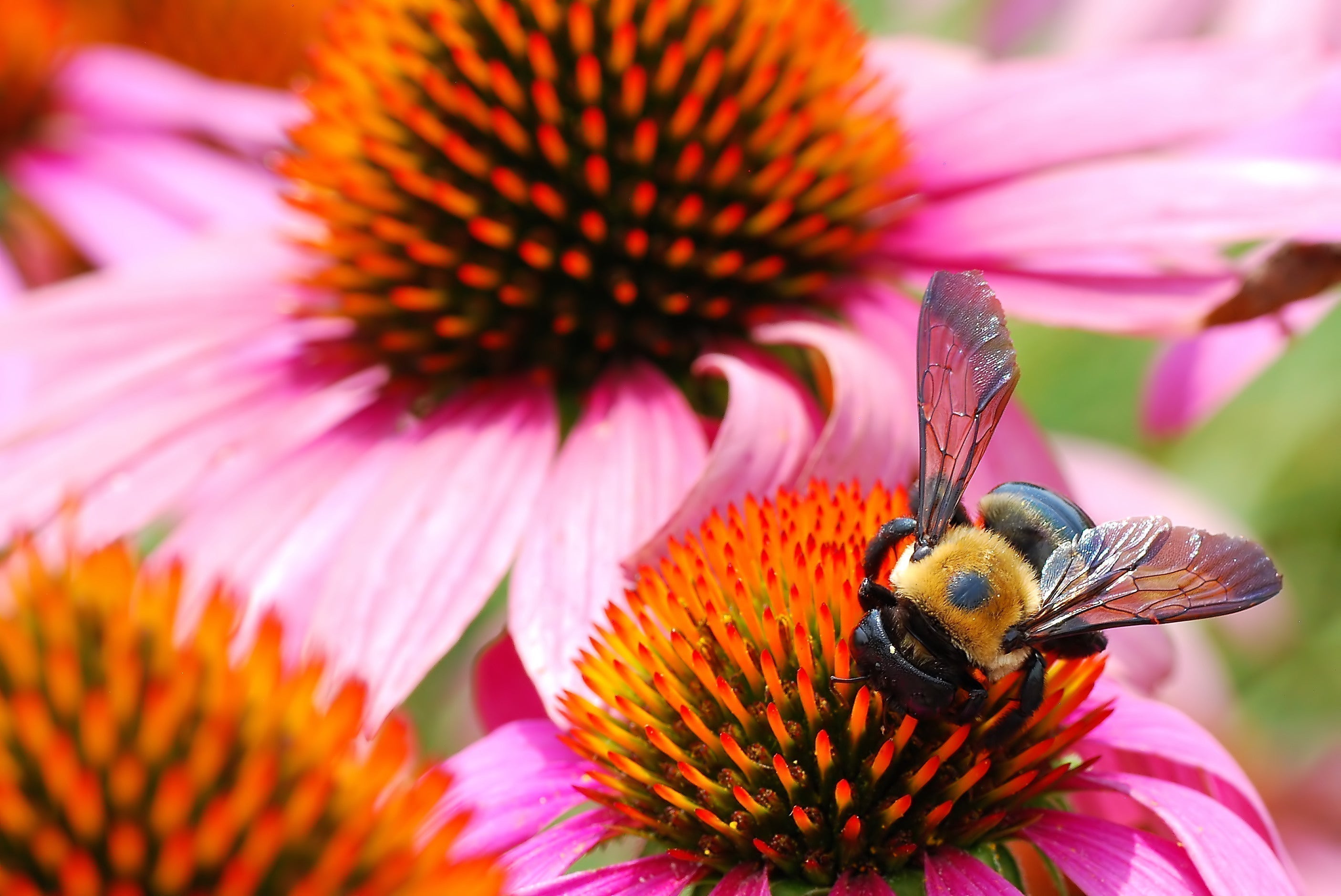As the flowers begin to bloom and warmer weather settles in, it’s the perfect time to think about creating a garden that not only looks beautiful but also supports the essential pollinators that keep our ecosystem thriving. Bees, butterflies, hummingbirds, and other pollinators play a crucial role in ensuring the health of plants, flowers, and food crops. Without them, our gardens would lack the vibrancy and productivity that make them so special.
If you want to cultivate a garden that welcomes and nourishes pollinators, here are some essential steps to take:
1. Choose Native and Nativar Variety Plants That Attract Pollinators
Native plants are an excellent choice for a pollinator-friendly garden. They have evolved alongside local pollinators, providing the nectar and pollen these creatures need to thrive. Some of the best native plants to consider include:
- Oregon Grape (Mahonia sp) – Evergreen shrubs that bloom in late winter and are enjoyed by bees, butterflies and many other pollinators.
- Coneflowers (Echinacea) – A favorite among butterflies and bees, these hardy perennials offer a long-lasting nectar source.
- Kinnikinnick/Manzanita (Arctostaphylos) – Evergreen groundcover that bloom in spring, is drought tolerant and attracts birds, bees and butterflies.
- Milkweed (Asclepias) – The only host plant for monarch butterfly caterpillars, making it essential for their survival.
- Lavender (Lavandula) – Known for its calming fragrance, lavender is a favorite among bees and other beneficial insects.
- Bee Balm (Monarda) – Its vibrant blooms attract hummingbirds, bees, and butterflies.
- Goldenrod (Solidago) – A crucial late-season food source for pollinators preparing for winter.
- Black-eyed Susan (Rudbeckia) – A bright, cheerful flower that provides ample nectar for bees and butterflies.
By incorporating a variety of these plants, you’ll ensure that pollinators have access to nectar and pollen throughout the growing season.
2. Why Pollinators Are Essential to Your Garden and Beyond
Pollinators are responsible for fertilizing about 75% of flowering plants and approximately 35% of the food crops we rely on. Without their hard work, we would see a dramatic decline in fruits, vegetables, and nuts, as well as a loss of biodiversity in natural landscapes.
Beyond food production, pollinators contribute to the overall health of ecosystems by supporting plant reproduction, which in turn provides food and shelter for a wide range of wildlife. A decline in pollinator populations due to habitat loss, pesticides, and climate change can have ripple effects throughout the environment, making it even more critical to create gardens that support their well-being.

3. Organic Practices to Protect Pollinators
Chemical pesticides and herbicides can be harmful to pollinators, often affecting their ability to forage, reproduce, and navigate their surroundings. Instead of using synthetic chemicals, opt for organic gardening methods such as:
- Companion Planting – Certain plants naturally repel pests, reducing the need for pesticides. For example, planting basil near tomatoes can deter harmful insects.
- Hand-Picking Pests – Physically removing pests like aphids and caterpillars can help control infestations without harming pollinators.
- Providing a Water Source – Pollinators need water just as much as they need nectar. A shallow dish with stones for perching can serve as a perfect hydration spot.
- Avoiding Chemical Sprays – If pest control is necessary, choose natural options like neem oil or insecticidal soap, apply them in the early morning or evening when pollinators are less active and avoid spray the flowers.
- Maintaining a Diverse Garden – A mix of flowering plants, shrubs, and trees provides shelter and food for a wide range of beneficial insects.
4. Creating a Pollinator Habitat
In addition to planting the right flowers, consider incorporating elements that create a welcoming environment for pollinators:
- Leave Some Bare Ground – Many native bee species are ground-nesters and need undisturbed soil to create their homes.
- Provide Nesting Areas – Install bee hotels or leave hollow stems and dead wood to provide shelter for solitary bees and other beneficial insects.
- Plant in Clusters – Grouping the same type of flower together makes it easier for pollinators to find and access their food sources.
- Limit Lawn Space – Instead of maintaining a large lawn, incorporate wildflower patches or meadows that offer more diverse resources for pollinators.
A pollinator-friendly garden not only benefits bees, butterflies, and other beneficial insects but also enhances the beauty and productivity of your outdoor space. By planting native species, avoiding harmful chemicals, and creating a welcoming habitat, you can support these crucial creatures while enjoying a thriving, vibrant garden.
As you plan your spring planting, consider how each choice can contribute to a healthier, more sustainable ecosystem. Small changes in your gardening practices can make a big difference in protecting pollinators for generations to come.

Like this page about pollinators. Suggest that you arrange an area of display for this concept so we gardeners can easily find and strategize, if you don’t already. I will come in soon to shop.
Cindy
I very much appreciate your highlighting the benefits of using native plants and avoiding harmful chemicals!
Last year, I purchased quite a few nodding onions, vanilla leaf and a few other small items. Would love to see you carry native birch-leafed Spirea and other native shrubs & ferns too. I personally avoid buying anything not native.
Thanks again!
Jan
Leave a comment